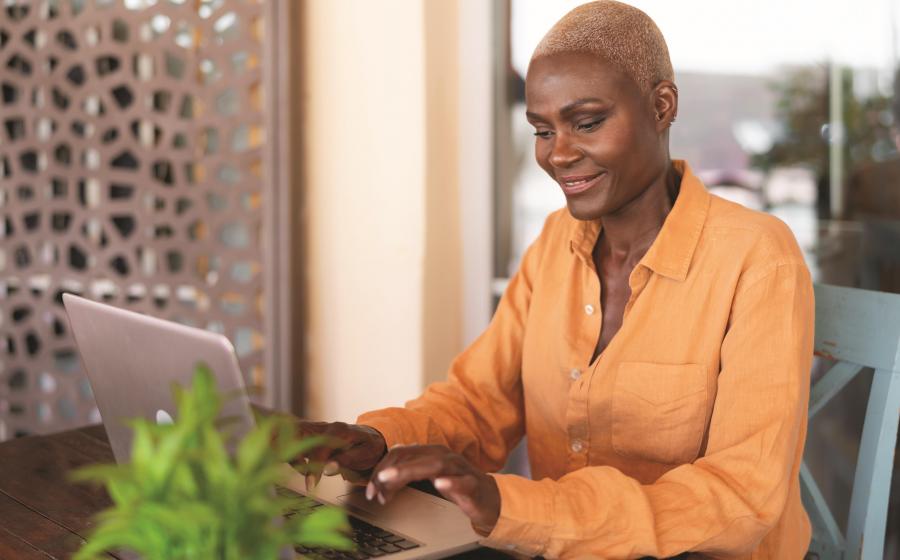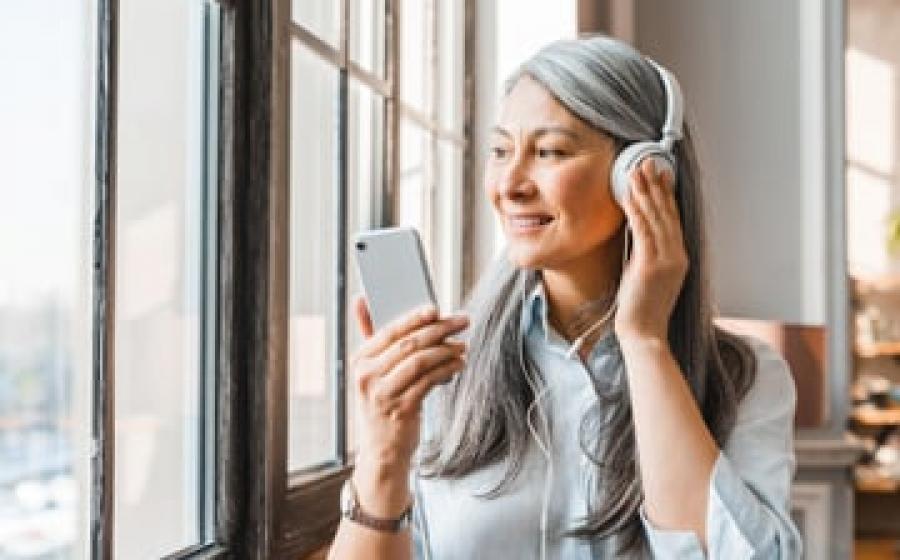Siete maneras de mantener una presión arterial saludable durante el embarazo
(NewsUSA) - ¿Está embarazada o planeando un embarazo? Es hora de pensar en su presión arterial, incluso si nunca ha tenido presión arterial alta. Aproximadamente la mitad de las complicaciones en el embarazo, como tener un bebé prematuro, están relacionadas con la presión arterial alta. Las complicaciones en el embarazo también aumentan el riesgo de desarrollar una enfermedad cardíaca años más tarde. Pero muchas complicaciones en el embarazo se pueden prevenir.
- ¿Está embarazada o planeando un embarazo? Es hora de pensar en su presión arterial, incluso si nunca ha tenido presión arterial alta. Aproximadamente la mitad de las complicaciones en el embarazo, como tener un bebé prematuro, están relacionadas con la presión arterial alta. Las complicaciones en el embarazo también aumentan el riesgo de desarrollar una enfermedad cardíaca años más tarde. Pero muchas complicaciones en el embarazo se pueden prevenir.
Usted puede comenzar su embarazo con una presión arterial saludable de menos de 120/80 mm Hg, pero aun así desarrollar un tipo de presión arterial alta que ocurre durante o justo después del embarazo. Una es la hipertensión gestacional, definida como presión arterial de 140/90 mm Hg o mayor. Por lo general, ocurre después de 20 semanas de embarazo o cerca del parto.
La preeclampsia es una combinación de presión arterial alta que se desarrolla después de 20 semanas de embarazo con otros signos de que sus órganos no están funcionando bien, como niveles altos de proteínas en la orina. Los casos graves pueden conducir a convulsiones o coma potencialmente mortales, una afección conocida como eclampsia.
Aquí se presentan siete maneras de ayudar a mantenerlos a usted y a su bebé a salvo de los problemas relacionados con la presión arterial alta.
1. Hable con su profesional médico.
Incluso si aún no está embarazada, saber si tiene presión arterial alta puede ayudar a determinar si corre un mayor riesgo de desarrollar complicaciones relacionadas con el embarazo. Trabaje con su profesional médico a fin de hacer un plan para un embarazo saludable. Esto incluye hablar acerca de lo siguiente:
- Cuál es su rango de presión arterial saludable.
- Cómo controlar o reducir la presión arterial alta adoptando un estilo de vida saludable, como ser físicamente activa, elegir alimentos saludables para el corazón que sean bajos en sal y sodio y no fumar.
- Medicamentos que está tomando. Si ya está tomando medicamentos para la presión arterial, pregunte si el tipo que toma puede usarse cuando esté embarazada.
- El historial médico de su familia. Si otras personas en su familia tuvieron preeclampsia, su profesional médico podría recomendarle tomar precauciones adicionales.
- Cómo otros factores individuales, como su edad, el lugar donde vive, su raza o el acceso a la atención médica, podrían afectar su riesgo de desarrollar complicaciones relacionadas con el embarazo.
2. Monitoree su presión arterial.
Por lo general, usted no puede sentir si tiene la presión arterial alta. Como parte de su atención prenatal regular, su profesional médico controlará su presión arterial en cada visita. Si es alta, puede sugerirle que consiga un monitor casero. Si necesita uno, pida a alguien en el consultorio de su profesional médico que la ayude a asegurarse de que funcione correctamente y de que lo está usando correctamente. Luego, haga un seguimiento de sus números. Además, pregunte a su profesional médico cuándo debería llamar si sus números aumentan.
3. Conozca los signos de la preeclampsia.
La preeclampsia podría no causar síntomas al principio. Sin embargo, usted puede notar algunos síntomas leves, tales como:
- Hinchazón en las manos o la cara
- Aumentar de peso repentinamente durante uno a dos días
- Subir más de dos libras por semana
- Orinar con menos frecuencia de lo normal
La preeclampsia generalmente ocurre después de la 20.a semana de embarazo. También puede desarrollarse después del parto, con mayor frecuencia dentro de las 48 horas. Si tiene algún síntoma o le parece que algo anda mal, siempre es mejor llamar a su profesional médico. Vaya al departamento de emergencias o llame al 9-1-1 si experimenta alguno de estos síntomas de preeclampsia grave:
- Dolor de cabeza que no desaparece o empeora
- Dificultad para respirar
- Dolor en el lado derecho, debajo de las costillas o en el hombro derecho
- Náuseas y vómitos
- Cambios en la visión
4. Obtenga apoyo de amigos y familiares.
Informe acerca de los signos de complicaciones en el embarazo a sus familiares y amigos. Pídales que la ayuden a monitorear cómo se siente y la ayuden a obtener atención médica. Cuando hable con su profesional médico, estos amigos pueden asegurarse de que usted describa todos sus síntomas y haga todas sus preguntas, y pueden abogar por usted para que obtenga la atención que necesita.
5. Trate de controlar el estrés.
El estrés no es bueno para su presión arterial. Practique el activar la respuesta de relajación innata de su cuerpo (lo opuesto a la respuesta al estrés). La visualización guiada, la relajación muscular progresiva y los ejercicios de respiración profunda son técnicas que pueden ayudarla a relajarse. Moverse más puede ayudar a calmar su mente y cuerpo, y es importante para la salud general de su corazón. Pruebe a hacer yoga o reúnase con amigos para dar un paseo rápido. Estar en la naturaleza también puede ser muy relajante para algunas personas.
6. Manténgase saludable después del embarazo.
Después de su embarazo, trate de mantener sus rutinas de cuidado personal, especialmente para la salud de su corazón. Si usted tuvo preeclampsia, necesitará tener especial cuidado con su corazón. Una de las mejores cosas que puede hacer es compartir los detalles acerca de las complicaciones en el embarazo con sus profesionales médicos. Dígales qué sucedió y qué tratamiento recibió. Es posible que necesite un examen cardiovascular tres meses después del embarazo y luego anualmente. El examen medirá su presión arterial, el colesterol, el nivel de azúcar en la sangre y el peso. Recuerde ... usted conoce su cuerpo. Identificar y modificar de manera temprana los riesgos de enfermedades cardiovasculares puede reducir significativamente el riesgo de experimentar un ataque cardíaco o un accidente cerebrovascular años más tarde. Informe a su profesional médico si su presión arterial aumenta o si le parece que algo anda mal.
7. Obtenga más información.
Obtenga más información acerca de la salud del corazón y el embarazo y encuentre recursos para controlar sus números de presión arterial en nhlbi.nih.gov/hypertension.



 - Approaching age 65 can be an overwhelming time for many newly eligible Medicare beneficiaries. When can you begin to enroll? Which plans should you consider? What do you need to know?
- Approaching age 65 can be an overwhelming time for many newly eligible Medicare beneficiaries. When can you begin to enroll? Which plans should you consider? What do you need to know?
 - - Like the more than 25 million first responders in the United States, Jeff Cooper, a former deputy in the Broward County Polygraph Unit, took an oath to protect and serve his community. However, like many first responders, Cooper's promise did not necessarily extend to himself -- until a worsening medical condition forced him to focus on his health.
- - Like the more than 25 million first responders in the United States, Jeff Cooper, a former deputy in the Broward County Polygraph Unit, took an oath to protect and serve his community. However, like many first responders, Cooper's promise did not necessarily extend to himself -- until a worsening medical condition forced him to focus on his health.
 - The challenges of the past two years have raised global stress to unprecedented levels, illuminating the importance of prioritizing mental health.
- The challenges of the past two years have raised global stress to unprecedented levels, illuminating the importance of prioritizing mental health. - Witnessing a cardiac arrest can be frightening, but don't be afraid to take action -- two simple steps can save a life.
- Witnessing a cardiac arrest can be frightening, but don't be afraid to take action -- two simple steps can save a life. - By Maria Sophocles, MD
For NewsUSA
- By Maria Sophocles, MD
For NewsUSA - The pandemic created a major shift in the way people consume - and, more importantly, trust - information, especially as it relates to vaginal health. In fact, a
- The pandemic created a major shift in the way people consume - and, more importantly, trust - information, especially as it relates to vaginal health. In fact, a  - Although COVID-19 continues to grab the health headlines, women in particular should not lose sight of a chronic problem -- heart disease.
- Although COVID-19 continues to grab the health headlines, women in particular should not lose sight of a chronic problem -- heart disease. - Now more than ever, we worry about maintaining our good health, and we are especially concerned about having a strong immune system that can take on all types of infections.
- Now more than ever, we worry about maintaining our good health, and we are especially concerned about having a strong immune system that can take on all types of infections. -Students and educators alike have been facing increased hardship this school year, navigating hybrid and remote learning environments while balancing schoolwork and other priorities. While individuals of all ages struggle with stress, research shows that teenagers are experiencing more anxiety than other age groups due to the pandemic.
-Students and educators alike have been facing increased hardship this school year, navigating hybrid and remote learning environments while balancing schoolwork and other priorities. While individuals of all ages struggle with stress, research shows that teenagers are experiencing more anxiety than other age groups due to the pandemic. - A healthy immune system has always been important, but now more than ever, the best products for immune system support are those that boost both respiratory health and heart health.
- A healthy immune system has always been important, but now more than ever, the best products for immune system support are those that boost both respiratory health and heart health.


